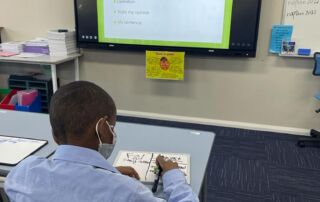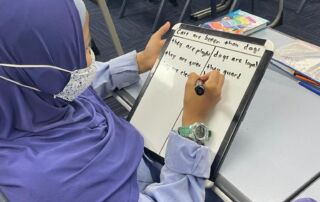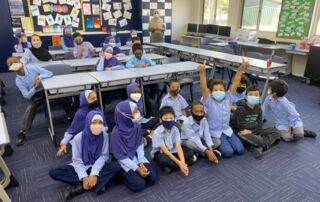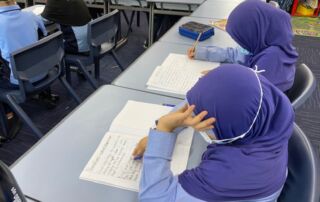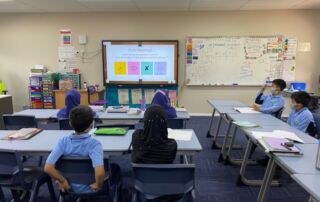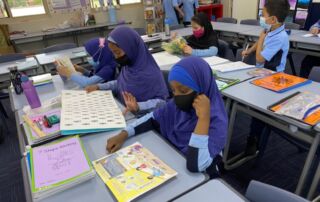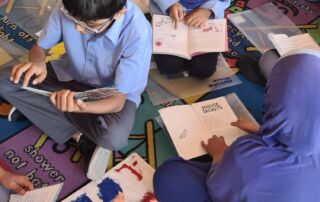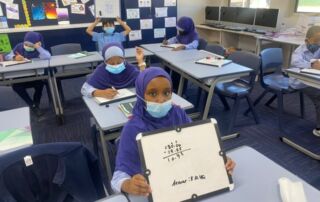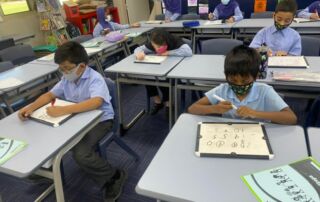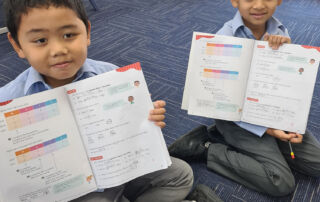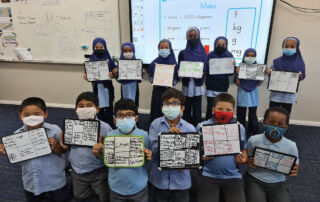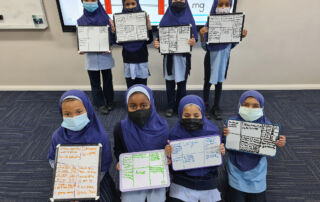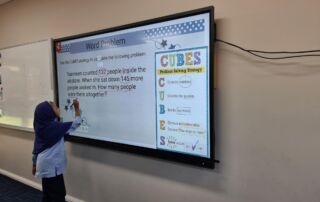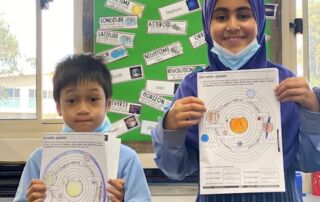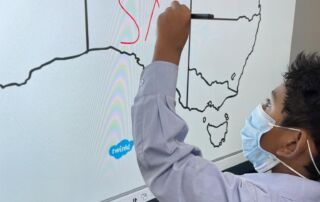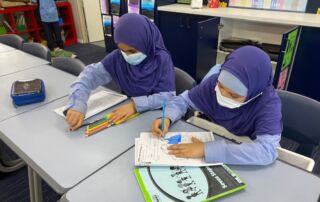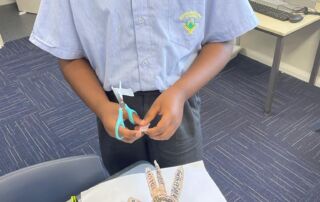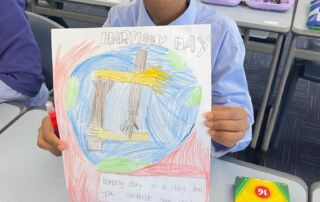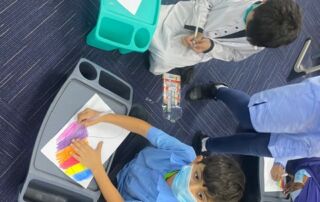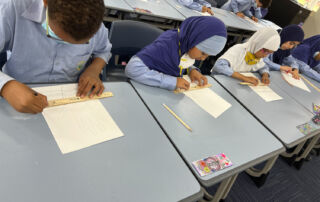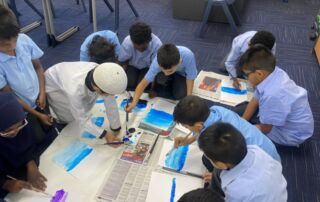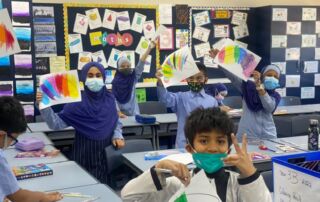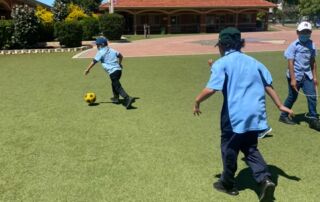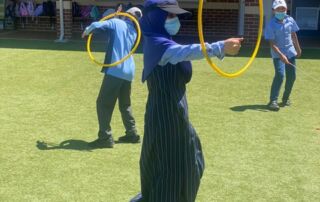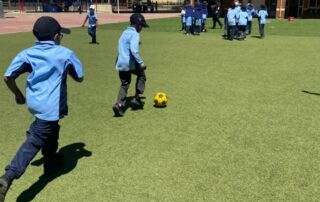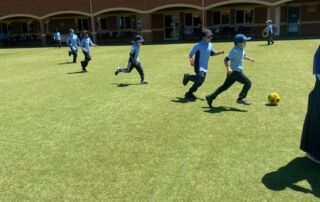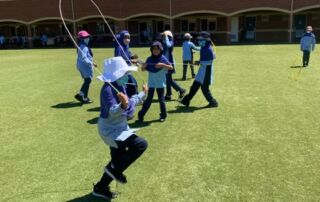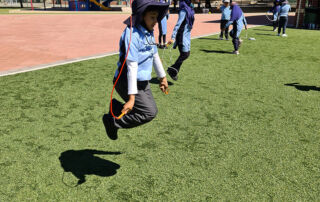24 March 2022
English
Sharp Reading
Sharp Reading is a teaching and learning framework that provides direction for students and equips them to be SHARP (efficient, cutting edge) in their understanding of reading. Sharp Reading allows students to THINK while reading in order to unpack and understand text. This is our daily morning routine since the beginning of term 1 with the year 3 students.
Persuasive & Narrative Writing
Narrative writing allows students to discuss how language is used to describe the settings in texts, and explore how the settings shape the events and influence the mood of a narrative. Students also drew connections between personal experiences and the worlds of texts, and share responses with others through narrative writing.
Persuasive Writing aims to present an idea to a reader and persuade them to agree with the writer’s point of view. Learning to write persuasively is a crucial ‘real life’ skill for students. Some examples of persuasive texts include: arguments, expositions, discussions, and letters to the editor, debates, reviews and advertisements. The year 3 students have been focusing on specific structures when writing persuasive texts. Some of the structures we have been following include: sizzling starts, global statements, connectives, high modal verbs and ending with an impact.
Reading Comprehension
The students used comprehension strategies to build literal and inferred meaning and began to evaluate texts by drawing on a growing knowledge of context, text structures and language features.
Grammar & Spelling
The students learned a range of grammar concepts including that verbs represent different processes, for example doing, thinking, saying, and relating and that these processes are anchored in time through tense.
Year 3 students have been focusing on NAPLAN words as well as a spelling skill weekly for term 1.
Numeracy
Number and Algebra
The students have count to and from 10 000. They have classified numbers as either odd or even. Students have recalled addition and multiplication facts for single-digit numbers. They have recognised the connection between addition and subtraction and solve problems using efficient strategies for multiplication. Students have modelled and represented unit fractions. They have represent money values in various ways. Students have correctly counted out change from financial transactions. They have continued presenting number patterns involving addition and subtraction.
Measurement and Geometry
Students have identified symmetry in the environment. They have matched positions on maps with given information. Students have recognised angles in real situations. They have interpreted and compared data displays. Students have used metric units for length, mass and capacity. They told time to the nearest minute. Students made models of three-dimensional objects.
Statistics and Probability
Students have conducted chance experiments and listed possible outcomes. They have conducted simple data investigations for categorical variables. Students have interpreted and compared data displays.
Science
Earth & Space Science
Students have been reading about Earth’s rotation. They understood that the rotation on Earth allows time to change from day to night and vice versa. Students understand that successful cooperation with others depends on shared use of social conventions, including turn-taking patterns, and forms of address that vary according to the degree of formality in social situations.
HASS
The year 3 students have studied about the importance of fossils to our history. Students have learnt that Australia has six states and territories which can be represented on a map. Each state and territory has a capital city. They have understood that Australia has regional centres in each state and these can be represented on a map. They have become aware that Australia has many important and unique natural features in different states and territories including rock formation and reefs. Students have also identified who lived in Australia first.
Visual Art
In Year 3, students extend their understanding of the visual elements as they reflect on their use to create artwork using different mediums. They experiment with varying techniques and explore the different properties and qualities of materials that can be used creatively. Students explore art from other cultures and consider where and how artwork is presented to an audience. As they make and respond to artwork, students are introduced to the use of visual art terminology. They use the terminology to reflect on how the elements are used in the artwork they view and make
Health & Physical Education
The students worked on range of health subjects including: understanding the importance of a healthy and balanced diet in maintaining general wellbeing; recognising the importance of being physically active to improvement health and wellbeing; and describing situations and events that happen to them that lead to different emotions.


